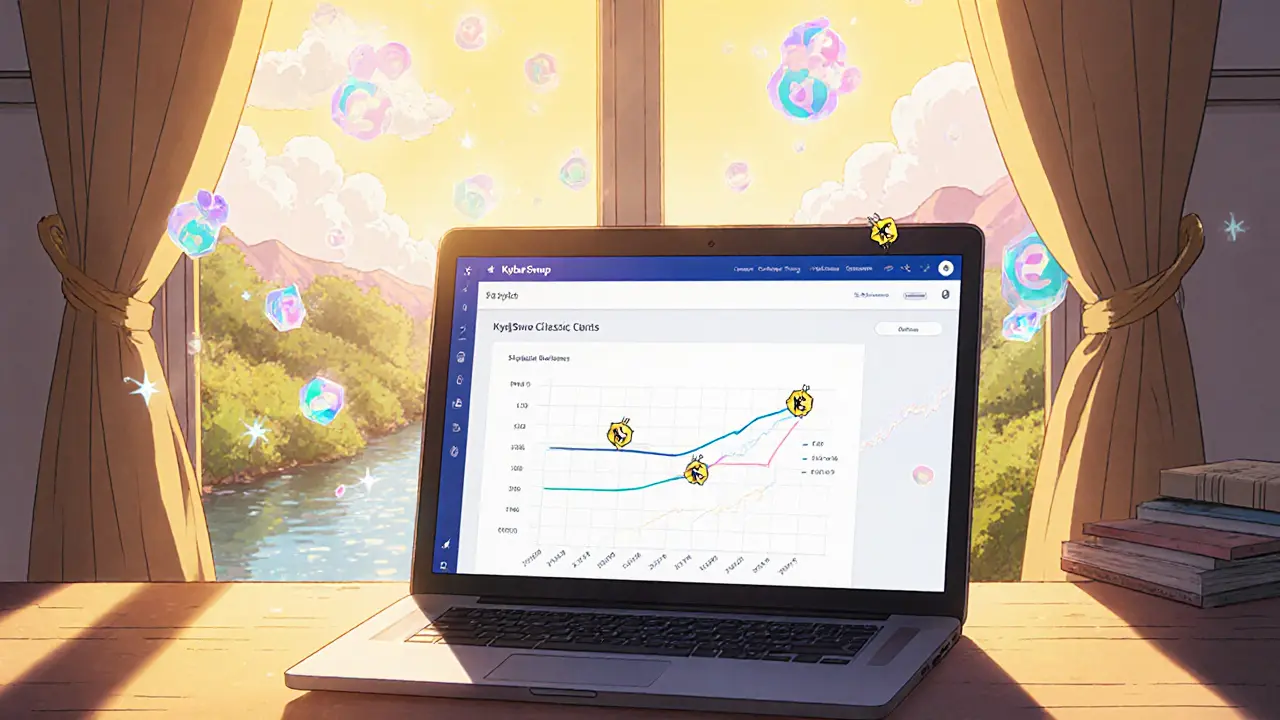KyberSwap Fees Explained: What Traders Need to Know
When working with KyberSwap fees, the charges applied when swapping tokens on the KyberSwap decentralized exchange. Also known as KyberSwap charge model, it determines how much you pay per trade and influences overall cost efficiency.
KyberSwap operates as a decentralized exchange (DEX), a platform that lets users trade directly from their wallets without a central order book. DEXs typically combine a swap fee, a percentage taken from each trade to reward liquidity providers with the network's gas fee, the cost paid to miners or validators for processing the transaction.
How the fee components interact
The total amount you see on your screen is a sum of three parts. First, the protocol fee—KyberSwap’s own cut, usually a fraction of a percent. Second, the liquidity provider fee, the reward paid to pool contributors for supplying assets. Third, the network gas cost, the blockchain fee that varies with congestion and transaction complexity. In formula terms: Total Cost = Swap Fee + LP Fee + Gas Fee. This simple equation shows why a low swap fee can still feel expensive if gas spikes.
Understanding each piece helps you optimize trades. For example, swapping during low‑traffic periods reduces gas, while choosing high‑liquidity pools trims the LP fee because the price impact shrinks. KyberSwap also offers dynamic fee tiers: heavy‑volume pairs enjoy lower protocol fees, encouraging deeper liquidity. That relationship—higher volume leads to lower fees—mirrors what you see on Uniswap or PancakeSwap, reinforcing the broader DEX fee‑structure trend.
Another factor is the token used to pay fees. Some DEXs let you settle gas with native chain tokens (ETH, BNB) while others accept the platform’s own token for a discount. KyberSwap currently charges gas in the native blockchain’s coin, but it occasionally runs fee‑rebate promos using its KNC token. Keeping an eye on these promotions can shave a few basis points off every swap.
When comparing platforms, focus on three metrics: average swap fee, typical gas cost, and liquidity depth. KyberSwap’s average swap fee sits around 0.25 % for major pairs, slightly lower than many competitors that sit near 0.30 %. However, on congested networks like Ethereum, gas can eclipse the swap fee, making layer‑2 or alternative chains more attractive. That’s why many traders route small trades through Polygon or Arbitrum, where gas stays in the low‑cent range.
Risk management also ties into fees. A high‑frequency trader paying a constant 0.25 % on every trade needs to ensure the expected profit exceeds the cumulative fee drain. For long‑term holders, the fee impact is minimal because they trade infrequently. Knowing your strategy lets you decide whether to prioritize the lowest swap fee or the cheapest gas environment.
In practice, you can calculate your breakeven point with a quick spreadsheet: input the swap size, expected slippage, protocol fee, LP fee, and average gas price. The output tells you the minimum price movement you need to cover costs. Many community members share these templates on forums, and they work across DEXs because the fee structure is fundamentally the same.
Below you’ll find a curated set of articles that dive deeper into individual DEX fee models, real‑world comparison charts, and step‑by‑step guides for minimizing costs on KyberSwap and its rivals. Explore the list to sharpen your trading edge and stay ahead of fee‑related surprises.
25
KyberSwap Classic on Optimism: In‑Depth Crypto Exchange Review
A thorough review of KyberSwap Classic on Optimism covering fees, liquidity, security, user experience, and how it compares to other Optimism DEXs.
Latest Posts
Popular Posts
-
 What Is Collateralization in DeFi? A Clear Guide to How It Works and Why It Matters
What Is Collateralization in DeFi? A Clear Guide to How It Works and Why It Matters
-
 Xena Exchange Crypto Exchange Review: Professional Tools vs. Regulatory Risks
Xena Exchange Crypto Exchange Review: Professional Tools vs. Regulatory Risks
-
 What is Bitgert (BRISE) crypto coin? Full breakdown of the blockchain, tokenomics, and real-world performance
What is Bitgert (BRISE) crypto coin? Full breakdown of the blockchain, tokenomics, and real-world performance
-
 What is LUXO (LUXO) crypto coin? The truth about the luxury authentication token
What is LUXO (LUXO) crypto coin? The truth about the luxury authentication token
-
 What is Privix New (PRIVIX) Crypto Coin? Facts, Price, and Risks in 2025
What is Privix New (PRIVIX) Crypto Coin? Facts, Price, and Risks in 2025
Tags
- crypto exchange
- cryptocurrency
- crypto exchange review
- meme cryptocurrency
- blockchain
- cryptocurrency compliance
- Binance Smart Chain
- CoinMarketCap airdrop
- underground crypto Nepal
- crypto airdrop guide
- crypto staking
- Bitcoin mining Iran
- airdrop
- Ethereum staking
- GENIUS Act
- liquid staking
- cryptocurrency exchange security
- crypto
- crypto airdrop
- crypto regulations



